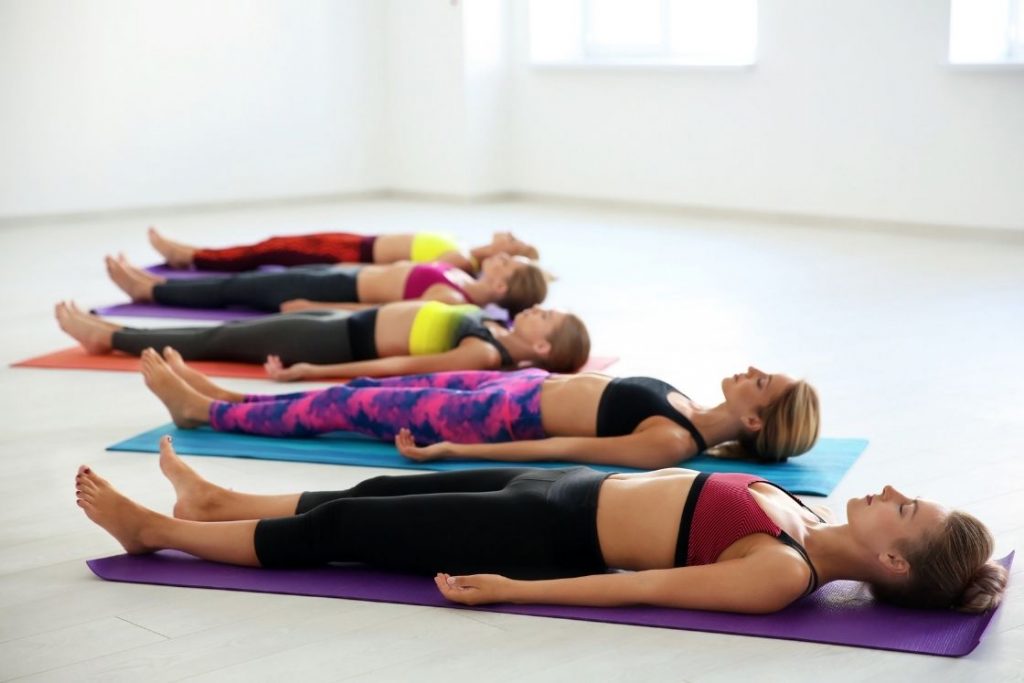
Shavasana, also known as the corpse pose, is one of the simplest yet most essential yoga poses.
Whether it’s a slow-paced yoga style like yin or restorative yoga, or a fast-paced style like vinyasa, Shavasana is a key component in all yoga practices. It is a relaxing posture performed at the end of a session to calm the mind and rejuvenate the body.
However, many people tend to skip the 10-15 minutes of Shavasana after yoga, leaving the class as soon as they finish the last pose. They often feel that those few minutes could be better spent ticking tasks off their to-do list, or they struggle with the idea of staying still.
Skipping Shavasana, however, means missing out on one of the most blissful and restorative aspects of a yoga practice.
The importance of Shavasana lies in its ability to provide the body with much-needed rest after an active yoga session. It also activates the parasympathetic nervous system, helping the body relax and return to its natural rhythm.
Shavasana is one of the easiest yoga poses to perform. Simply lie down on your yoga mat with your arms by your sides, palms facing up, and legs straight. Close your eyes and rest in this position for a few minutes. Even practicing it for just 3-5 minutes can offer significant benefits.
However, it is also one of the hardest to sustain. You need to lie completely still and revel in the sensations going through your body. Even though you have closed your eyes, you are aware of your surroundings yet completely relaxed.
You should not skip Shavasana and here’s why;
Savasana calm down the activated physical activity
Whether it’s the stress from a busy schedule, an intense sports session, or a 60-minute yoga practice, lying down on your yoga mat and completely letting go is one of the best ways to relax. Savasana helps you unwind and reconnect with a state of calmness.
This pose directly impacts your heart rate and breathing patterns. A fast heartbeat, heavy breathing, excessive sweating, and a surge of adrenaline are signs that your sympathetic nervous system (SNS), or “fight or flight” mode, is activated.
When you lie down in Savasana, your body begins to counter these effects by transitioning into parasympathetic nervous system (PNS) mode, also known as the “rest and digest” state. Similar to meditation, it enhances circulation, supports the proper functioning of major organs, boosts immunity, and accelerates recovery.
By reducing stress and fatigue, Savasana soothes the nervous system, leaving you feeling refreshed and rejuvenated.
It improves breath awareness
Breathing is something that we perform involuntarily. And it is also one of the most neglected aspects of our lives. Yoga teaches us to pay attention to our breath while practicing physical poses.
The breathing is greatly responsible for the shift from SNS to PNS through long exhalations. The awareness that you bring in for this breathing pattern is also a part of this process.
Since our minds are running with various thoughts, plans being made, schedules being created, songs being sung, decisions being made, savasana will encourage you to move away from such things for a while.
And when you make a conscious effort to gain mental clarity by bringing your entire focus on your breathing, you feel more calm, collected, stable, and relaxed.
It promotes natural detoxification process
Savasana can also be performed after an invigorating pranayama practice. When practicing pranayamas such as Ujjayi or Bhastrika, your focus is on powerful exhalations from the abdomen. Generating inner heat is one of the key factors in removing toxins from the body as well as the mind.
During the practice of such pranayamas, the SNS mode is activated. Performing savasana will give you the opportunity to experience the effects of such intense movements and shift to the PNS mode.
It will let the bodywork around spread the energy generated from such breathing exercising and enhance the detoxification process by giving it time to relax, rest and digest.
It helps you be aware of the flow of energy
It has been said time and again that savasana is a way to let your body relax and relish in the movement of energy.
You must have noticed the feeling in your muscles, the sensation of your muscles being stretched, or fluid movement when you perform an asana that focuses on a particular body part. Now imagine the same sensations after you have performed a range of asanas for 60-90 minutes.
After you lie down for savasana, you may feel tired but this pose encourages you to be conscious of the movements happening within your body. The awareness will help you in directing the energy for other useful matters.
Savasana teaches you to be conscious of the prana energy and train your mind to shift it towards a more purposeful use.
Savasana aid in building habit for yoga through a reward system
Who doesn’t like rewards? It can either be in the form of praise a gift or a positive outcome. Many of us are too lazy to start practicing yoga and make up many excuses to attend a class. Even if you are practicing it at home, you will consciously or unconsciously avoid it.
Once you have experienced the benefits of savasana, the bliss of doing nothing after all the movements, twists, and bends, you will eventually find a reason to practice yoga. A process where you are giving yourself time to relax, just letting your thoughts flow, not dwelling on many pros and cons, and away from the busy life is akin to a reward.
We seldom spend time for ourselves or crave to find peace, savasana gives you the opportunity to experience it.
Savasana is a great way to build resilience
As it was stated earlier, savasana may look simple but is one of the hardest to practice. Laying down on your bed to sleep is completely different from spending some time to relax after a yoga session.
Most people have planned out their day and have a schedule to fulfill as soon as the yoga ends. However, making a conscious effort to spend at least 3-10 minutes on closing your eyes and just lying still is a huge task in itself.
Here, you are not moving any limbs so you may feel that you are not doing anything. But with the benefits that have been panned out above, it is safe to say that it is an integral part of yoga. Thus, not doing anything, disciplining the mind to not stray away from mindless thoughts, and just enjoying the moment builds a certain resilience to control the body and mind.
So the next time you attend a yoga class, do not avoid this important pose. Spending 10 minutes for yourself will uplift your mood, enhance your productivity and keep you in the present.




